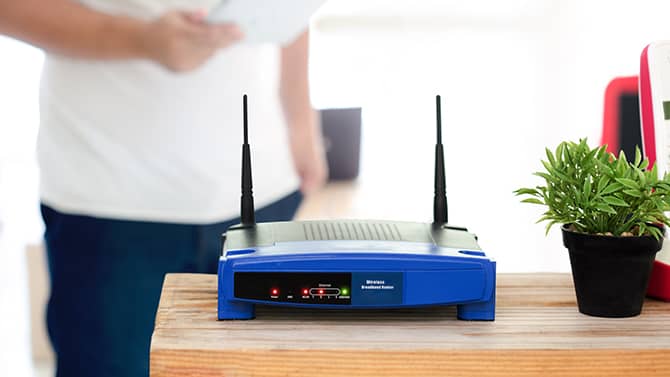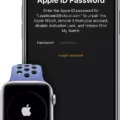Security is a paramount concern in today’s digital age. With the increasing reliance on technology and the internet, it is crucial to ensure the safety of our personal information and online activities. One aspect of security that often comes into the spotlight is the encryption protocol used for securing Wi-Fi networks.
Wireless networks are susceptible to various security vulnerabilities, and it is essential to choose the right encryption protocol to protect our data. While older protocols like WEP (Wired Equivalent Privacy) and WPA (Wi-Fi Protected Access) have been widely used in the past, they are no longer considered secure.
WEP, developed in the 1990s, was the initial encryption protocol used for securing Wi-Fi networks. However, it has significant weaknesses that make it vulnerable to hacking. WEP uses a static encryption key, which can be easily cracked by knowledgeable attackers using readily available tools. Once the key is compromised, the entire network is at risk, and the hacker can intercept sensitive information or even gain unauthorized access to connected devices.
To address the vulnerabilities of WEP, WPA was introduced in the early 2000s. While it provided improved security compared to WEP, it still fell short in terms of robustness. WPA uses a more advanced encryption algorithm called TKIP (Temporal Key Integrity Protocol) and introduces dynamic encryption keys that change periodically. However, WPA is still susceptible to various attacks, including dictionary attacks and brute-force attacks. With sufficient computing power, hackers can crack WPA encryption and gain access to the network.
The latest and most secure encryption protocol for Wi-Fi networks is WPA2 (Wi-Fi Protected Access 2). It builds upon the foundation of WPA and addresses the vulnerabilities that were present in its predecessor. WPA2 uses the stronger AES (Advanced Encryption Standard) encryption algorithm, which is currently considered secure and resistant to attacks.
To change your Wi-Fi network’s encryption from WPA to WPA2, you need to access your router’s settings. Open a web browser on your computer or mobile device and enter your router’s IP address in the address bar. This will take you to the router’s administration page. Navigate to the Wireless or Security section, where you can change the encryption type to WPA2-PSK (Pre-Shared Key). It is crucial to choose a strong password for your network to enhance security further.
While WPA2 is currently the most secure option available, it is important to note that no encryption protocol is entirely infallible. As technology advances, new vulnerabilities may be discovered, making even the most robust encryption protocols susceptible to attacks. Therefore, it is crucial to regularly update your devices’ firmware and be aware of any security patches or updates released by manufacturers.
Security is a critical aspect of our digital lives, and choosing the right encryption protocol for our Wi-Fi networks is crucial. While older protocols like WEP and WPA have been widely used in the past, they are no longer considered secure due to their vulnerabilities. WPA2 is currently the most robust encryption protocol available and should be utilized to protect our Wi-Fi networks and sensitive information. However, it is essential to stay vigilant and keep our devices and firmware up to date to mitigate any potential security risks.

Is WPA Not Secure?
WPA, or Wi-Fi Protected Access, is a security protocol that was developed as an improvement over the older WEP (Wired Equivalent Privacy) protocol. While WPA is more secure than WEP, it is not considered completely secure by today’s standards. Here are some reasons why WPA may not be considered secure:
1. Vulnerabilities: WPA has been found to have vulnerabilities that can be exploited by hackers. For example, the WPA-PSK (Pre-Shared Key) mode, which is commonly used in home networks, can be susceptible to brute-force attacks.
2. WPA-TKIP: WPA uses the TKIP (Temporal Key Integrity Protocol) encryption algorithm to secure the wireless communication. TKIP has several weaknesses and has been deprecated in favor of more robust encryption algorithms like AES (Advanced Encryption Standard). Therefore, if WPA is configured to use TKIP, it can be considered less secure.
3. Legacy Compatibility: WPA was designed to be backward-compatible with older devices that only support WEP. This means that if a network supports both WPA and WEP, an attacker can exploit the weaker WEP security to gain access to the network.
4. Cracking Tools: Over the years, various tools and techniques have been developed to crack WPA encryption. These tools take advantage of vulnerabilities or weaknesses in the protocol to gain unauthorized access to the network.
It is important to note that while WPA may not be considered completely secure, it is still better than using no security at all. However, to ensure a higher level of security, it is recommended to use the latest security protocols like WPA2 or WPA3, which offer stronger encryption algorithms and more advanced security features.
How Do You Make Your WPA WPA2 Secure?
To make your WPA Wi-Fi secure, you can follow these steps:
1. Connect your computer or mobile device to the Wi-Fi network you want to secure.
2. Open a web browser on your device.
3. In the address bar, enter the IP address of your router. This IP address is typically provided in the router’s manual or can be found by accessing your device’s network settings.
4. Press Enter or click Go to access the router’s configuration page.
5. On the router’s configuration page, you will find various menu options. Look for the Wireless or Wi-Fi settings.
6. Once you locate the Wireless settings, navigate to the Security or Encryption section.
7. In the Security or Encryption section, you will find an option to select the type of encryption. Choose WPA2-PSK as the encryption type. WPA2 provides better security than the older WPA standard.
8. After selecting WPA2-PSK, you will need to set a password for your Wi-Fi network. Make sure to create a strong password that includes a combination of letters, numbers, and special characters. Avoid using easily guessable passwords such as your name or birthdate.
9. Save the changes or apply the settings on the router’s configuration page.
10. Your Wi-Fi network is now secured with WPA2 encryption. All devices connecting to this network will need to enter the password you set during the configuration process.
By following these steps, you can switch your Wi-Fi network from WPA to WPA2 encryption, thereby enhancing the security of your wireless connection.
Is WPA Not Considered Secure Apple?
WPA (Wi-Fi Protected Access) is not considered secure, including for Apple devices. WPA was introduced as an improvement to the previously used WEP (Wired Equivalent Privacy) security protocol. While WPA provided enhanced security compared to WEP, it still has vulnerabilities that can be exploited by hackers.
The security weaknesses of WPA include the use of a shared key for all devices on the network, which can make it easier for unauthorized users to gain access. Additionally, WPA uses the Temporal Key Integrity Protocol (TKIP), which has been found to be susceptible to attacks.
To address these security concerns, WPA2 (Wi-Fi Protected Access 2) was introduced. WPA2 is a more robust security protocol and is considered much more secure than WPA. It uses the Advanced Encryption Standard (AES) encryption algorithm, which is widely recognized as secure and difficult to crack.
Apple devices, like iPhones, iPads, and Macs, support WPA2 and are compatible with this more secure protocol. It is highly recommended to configure your Wi-Fi router to use WPA2 Personal (AES) as the security type for your network.
By implementing WPA2 Personal (AES), you can significantly enhance the security of your Wi-Fi network and protect your Apple devices from potential security breaches.
Why is WPA2 Not Considered Secure?
WPA2, which stands for Wi-Fi Protected Access 2, is a widely used security protocol for Wi-Fi networks. It has been considered secure for many years, but recently a flaw known as KRACK (Key Reinstallation Attack) has been discovered, which undermines the security of WPA2.
The flaw in WPA2 allows an attacker to intercept and manipulate data transmitted over a Wi-Fi network. This means that an attacker could potentially gain unauthorized access to sensitive information, such as passwords, credit card numbers, or personal data. They could also inject malware, such as ransomware, into websites, compromising the integrity and security of the network.
The vulnerability lies in the way WPA2 handles the initial handshake between a device and a Wi-Fi network. During this handshake, keys are exchanged to establish a secure connection. However, using the KRACK technique, an attacker can trick the devices into reinstalling an already-used encryption key, allowing them to decrypt and manipulate the data transmitted over the network.
This flaw affects a wide range of devices, including smartphones, tablets, laptops, and routers, making it a significant security concern. It is important to note that the flaw is not specific to any particular brand or model of device but is inherent to the WPA2 protocol itself.
To address this vulnerability, device manufacturers and software developers have been releasing patches and updates to fix the issue. It is crucial for users to promptly install these updates to ensure the security of their Wi-Fi networks.
WPA2 is not considered secure due to the recently discovered flaw known as KRACK. This flaw allows attackers to intercept and manipulate data transmitted over Wi-Fi networks, potentially leading to unauthorized access to sensitive information and the injection of malware. However, patches and updates are available to mitigate this vulnerability, and it is important for users to install them to ensure the security of their networks.
Conclusion
Security is of utmost importance in today’s digital age. With the increasing number of devices connected to the internet, it is crucial to ensure that our data and communication remain protected from potential threats.
While older security protocols like WEP may have been sufficient in the past, they are no longer considered secure and are vulnerable to hacking. WPA, although stronger than WEP, still has its limitations and can be exploited by skilled hackers.
To enhance the security of our Wi-Fi networks, it is recommended to switch to WPA2 encryption. This protocol provides a higher level of security by using the AES (Advanced Encryption Standard) algorithm. By making this change, we can significantly reduce the risk of unauthorized access to our network and protect our sensitive information from being compromised.
In addition to choosing a stronger encryption protocol, it is important to create a strong password for our Wi-Fi network. A strong password should be a combination of uppercase and lowercase letters, numbers, and special characters. By doing so, we can further enhance the security of our network and make it more difficult for hackers to gain access.
It is worth noting that security is an ongoing process, and it is essential to stay updated with the latest security patches and updates for our devices and routers. Regularly checking for firmware updates and applying them promptly can help address any vulnerabilities and ensure that our network remains secure.
Investing in robust security measures is crucial to safeguard our digital lives and protect our sensitive information. By implementing strong encryption protocols like WPA2 and practicing good password hygiene, we can create a safer online environment for ourselves and our connected devices.













